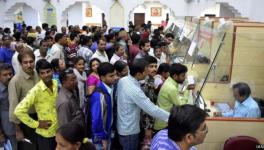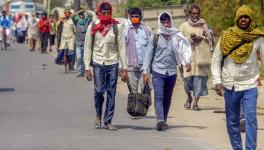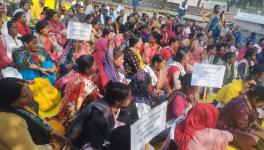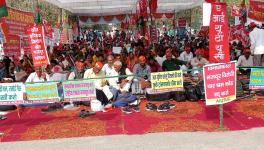Budget 2020-21: More Needed to Make Medical Devices Affordable

Representational Image.
Health technologies are gradually coming to the forefront and occupying a central place in the medical industry. Over time, there has been an increasing diffusion of medical devices in the Indian health system. For example, the 71st round of surveys of the NSSO record the share of diagnostic tests in the total cost of in-patient treatment increasing from 9.7% in 2014 to 10.4% in 2017-18. Likewise, the share of diagnostic tests in out-patient treatment grew from 11.6% to 12.8% over the same period.
The Indian health system might experience further increase in diffusion of health technology after the outbreak of Covid-19 pandemic. It might require more test kits, ventilators, and personal protective equipment including masks, face shields, gowns, gloves, respirators etc.
India has a small indigenous medical devices manufacturing industry; 70% of the total domestic need for medical devices and equipment is served through imports. As an obvious consequence of the increase in diffusion of health technology and import dependence, the country has witnessed a significant increase in charges of diagnostics tests.
Union budget 2020-21 aspired for a “holistic vision of healthcare” in India, with an allocation of Rs 69.3 thousand crores as the federal health budget. This marks a 3.9% hike in the budget compared with the previous budget. Keeping in mind that with a 7.35% rate of inflation, this increase would amount to much less! Health accrues less than 3% of the total budget and 2.5% of the GDP. It remains low-priority for the government.
Further, the government’s interest in bringing the private sector to the forefront of healthcare in the country is clearly mandated in Union Budget 2020-21 for the healthcare sector. This budget emphasises on greater reliance on the private sector and announces new hospitals and attaches certain medical colleges to existing district hospitals in PPP mode; described as a “viability gap funding window” for enhancing service delivery system.
A health cess, at the rate of 5%, is proposed to be imposed on the import of medical devices in the same budget, to finance the upgradation of district hospitals in tier 2 and tier 3 cities. However, this health cess would not be applied on life-saving medical devices, which are exempted from basic customs duty. The Budget definitely incentivises local manufacturers of medical devices and will make imported medical devices more costly.
However, if domestic manufacturers fail to meet the growing demand due to substitution of costly imported devices, it may end up escalating costs for patients. The increased use of imported medical devices and equipment coupled with the limited production capacity of domestic medical devices manufacturers can accelerate a catastrophic health expenditure in the country, where out-of-pocket health expenditure become colossal in size.
The markets in developing countries such as India are price-sensitive and choices are always driven by price over quality. In the absence of well-grounded regulatory frameworks, there may be an influx of low-quality and refurbished imported medical devices into the economy.
Unfortunately, there is no clear roadmap for involving public sector units in the production of essential medical devices domestically. Even if India enables itself with higher capacity for domestic production of medical devices, there is still a possibility that it will not amount to any real relief for patients. For, in that changed situation, domestic private manufacturers will make a profit instead of their foreign counterparts, unless strict regulatory mechanisms are established and monitored.
A regulatory structure to control and monitor medical devices sector was virtually absent in India. The government of India first announced its intention to design a basic regulatory structure for this industry in 2005. Only 23 categories of medical devices and equipment have been brought under this regulatory framework, by creating a statutory action and deeming those devices as “drugs”. By virtue of taking this step, these medical devices (which are known as “notified medical devices”) are regulated under the Drugs and Cosmetics Rules, 1945.
The National Pharmaceutical Pricing Authority or NPPA monitors the maximum retail prices of these medical devices; and it has fixed ceilings or upper limits for their prices.
India is moving towards universal health coverage through different schemes and programmes. Ayushman Bharat or the Pradhan Mantri Jan Arogya Yojana, the recently launched flagship insurance-based health care programmes initiated by the federal government, aim to provide a financial risk protection coverage for hospitalisation at the secondary and tertiary levels. This type of program, with its huge scale of operation and coverage, may further intensify the demand for medical devices in the country in near future.
The task of any government is not only the promotion of domestic production of medical devices but also to equip its regulatory framework to monitor the quality of imported and domestically-produced medical devices to protect people’s health from profit seeking fly-by-night manufacturers or vendors For this reason, the government should bring all imported as well as domestically-produced medical devices under regulatory mechanisms. Involvement of public sector units in promotion of indigenous manufacturing of necessary medical devices and equipment also needs to be ensured. Moreover, UN Department of Economic and Social Affairs (DESA) predicted almost 1% shrink of global economy due to this pandemic, and the output could contract further.
The Indian economy could contract by 2% this year. Countries may need to reorganise its production structure to ensure uninterrupted supply of basic necessary commodities in the domestic market. In this changed situation with shrinking national and global economy imposition of additional import duty on health technology may not be a wise decision.
The author is a fellow at the National Institute of Public Finance and Policy, New Delhi. The views are personal.
Get the latest reports & analysis with people's perspective on Protests, movements & deep analytical videos, discussions of the current affairs in your Telegram app. Subscribe to NewsClick's Telegram channel & get Real-Time updates on stories, as they get published on our website.
























